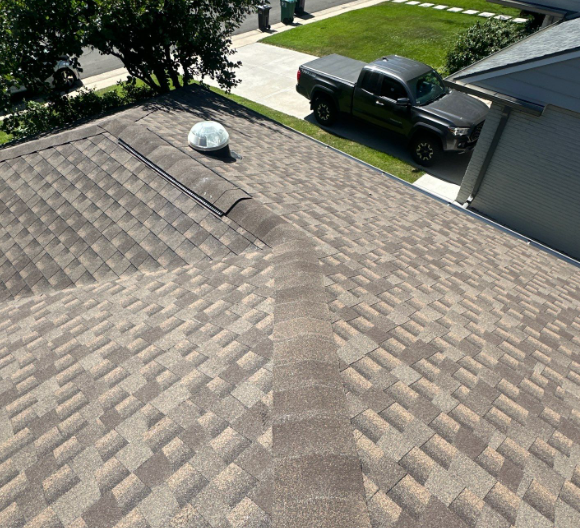Introduction
A robust and well-maintained roofing Denver is crucial for protecting your home from the elements. However, even the best roofs can develop leaks over time. Understanding the common causes of roof leaks and identifying potential vulnerabilities can help homeowners take proactive measures to maintain their roofs and avoid costly repairs. In this comprehensive guide, we will delve into the most frequent causes of roof leaks, providing detailed insights to help you safeguard your home.
1. Damaged or Missing Shingles
Shingles are the first line of defense for your roof. When they are damaged or missing, your roof becomes vulnerable to leaks. High winds, heavy rain, and hailstorms are common culprits that can dislodge or damage shingles. Inspect your roof regularly, especially after severe weather events, to ensure all shingles are intact and properly aligned. If you notice any damaged or missing shingles, it’s crucial to replace them promptly to prevent water from seeping into your home.
2. Cracked Flashing
Flashing is a thin material, typically made of metal, installed at joints and seams on your roof to prevent water from penetrating the structure. Over time, flashing can crack or corrode, creating gaps that allow water to seep through. Common areas where flashing is used include around chimneys, skylights, and vent pipes. Regularly inspect these areas for signs of damage or wear and tear. If you find any issues, repairing or replacing the flashing is essential to maintain the integrity of your roof.
3. Improperly Sealed Valleys
Valleys are the areas where two roof planes intersect, creating a V-shaped channel that directs water to the gutters. If the valleys are not properly sealed, water can infiltrate and cause leaks. Improper installation, aging, or damage can compromise the sealing in these areas. Inspect the valleys for any signs of deterioration or gaps in the sealant. Properly sealing the valleys will ensure efficient water drainage and protect your roof from leaks.
4. Clogged Gutters
Gutters play a vital role in directing water away from your roof and foundation. When gutters become clogged with leaves, debris, or ice, water can back up and seep under the roof shingles, leading to leaks. Regularly clean your gutters to ensure they are free from obstructions. Installing gutter guards can also help prevent debris buildup and reduce the frequency of cleaning. Properly functioning gutters are essential for maintaining a leak-free roof.
5. Skylight Leaks
Skylights can be a beautiful addition to your home, providing natural light and ventilation. However, they can also be a source of roof leaks if not properly installed or maintained. Leaks around skylights often occur due to improper sealing or flashing. Regularly inspect the seals and flashing around your skylights for any signs of damage or deterioration. Promptly addressing any issues will help prevent leaks and ensure your skylights remain a beneficial feature of your home.
6. Chimney Issues
Chimneys are another common area where roof leaks can occur. Cracks in the chimney crown, damaged flashing, or deteriorated mortar joints can all create entry points for water. Inspect your chimney regularly for any signs of damage or wear. Repairing cracks, replacing damaged flashing, and repointing mortar joints will help maintain the integrity of your chimney and prevent leaks.
7. Ice Dams
In colder climates, ice dams can form on the edges of your roof, preventing melting snow from draining properly. The trapped water can seep under the shingles and cause leaks. To prevent ice dams, ensure your attic is well-insulated and ventilated to maintain a consistent roof temperature. Installing heating cables along the roof edges can also help melt ice and prevent dam formation.
8. Aging Roof
Even the most well-maintained roofs have a finite lifespan. As your roof ages, the materials can deteriorate, making it more susceptible to leaks. Regular inspections and maintenance can help extend the life of your roof, but eventually, a replacement may be necessary. If your roof is approaching the end of its expected lifespan, consider consulting with a professional roofing company in Denver like Tried and True Roofing to assess its condition and determine if a replacement is needed.
Conclusion
Proactively identifying and addressing potential vulnerabilities in your roof is essential for preventing leaks and maintaining the safety and comfort of your home. Regular inspections, prompt repairs, and proper maintenance can significantly extend the life of your roof and protect your investment. For professional assistance and expert advice, consider reaching out to Tried and True Roofing. Our team of experienced Denver roofers is dedicated to providing top-quality roofing services and ensuring your home remains leak-free.
In conclusion, safeguarding your roof against leaks requires vigilance and timely action. By understanding the common causes of roof leaks and taking proactive measures, you can protect your home and enjoy peace of mind. Remember, a well-maintained roof is not just a shield against the elements but also a crucial element of your home’s structural integrity. For expert roofing services, trust the experienced team at Tried and True Roofing, your reliable partner in maintaining a leak-free roof.
